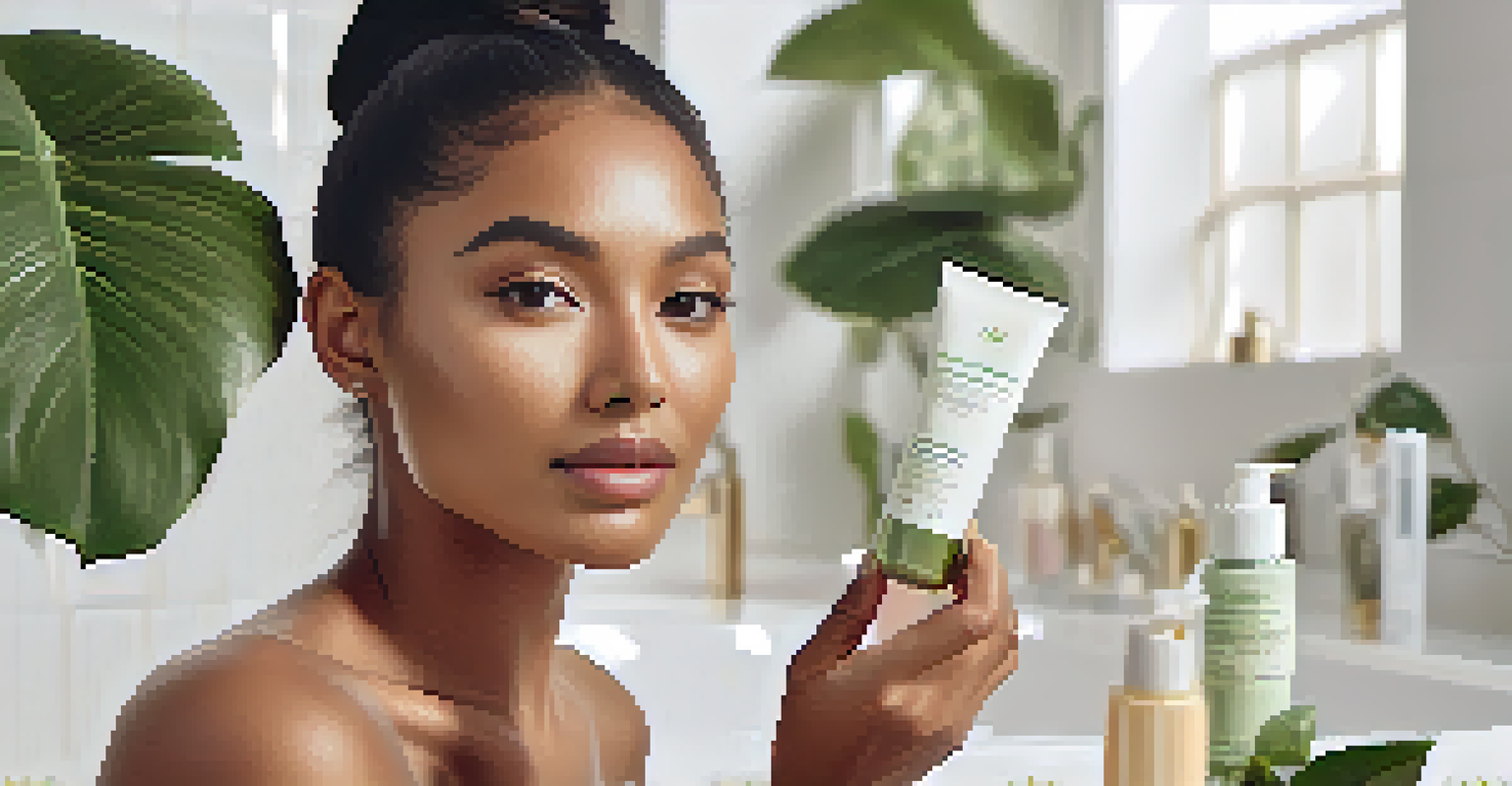The Impact of Micro-Influencers on Luxury Marketing

Understanding Micro-Influencers in Luxury Marketing
Micro-influencers are social media users with a smaller but highly engaged following, typically ranging from 1,000 to 100,000 followers. They often have niche audiences, making them particularly effective for brands looking to reach specific demographics. Unlike traditional influencers, these individuals usually maintain authenticity and relatability, which resonates well with potential buyers in the luxury market.
People don’t buy what you do; they buy why you do it.
For luxury brands, collaborating with micro-influencers offers a unique opportunity to tap into targeted consumer segments. This approach allows brands to showcase their products in a more genuine context, often leading to higher engagement rates. Ultimately, these influencers create a bridge between the luxury brand and consumers who value authenticity over celebrity status.
Additionally, micro-influencers tend to foster stronger relationships with their followers, which can translate into trust and loyalty for the brands they endorse. This trust is crucial in luxury marketing, where consumers often seek validation before making high-ticket purchases. By leveraging micro-influencers, luxury brands can cultivate a sense of community and connection that traditional marketing strategies may lack.
The Shift from Macro to Micro-Influencers
In recent years, there has been a noticeable shift from relying solely on macro-influencers to embracing micro-influencers in marketing strategies. This change is driven by the realization that followers of larger influencers may not be as engaged or trustful as those of smaller, niche influencers. As consumers become savvier, they are increasingly drawn to authenticity, which micro-influencers often provide in abundance.

This trend is especially significant in the luxury market, where brand perception is paramount. By collaborating with micro-influencers, luxury brands can craft more personalized and relatable narratives around their products. This approach not only increases authenticity but also provides a more tailored marketing experience that resonates with discerning consumers.
Micro-Influencers Drive Authenticity
Collaborating with micro-influencers allows luxury brands to connect with consumers through genuine and relatable narratives.
Moreover, the cost-effectiveness of partnering with micro-influencers cannot be overlooked. Typically, these influencers charge less for promotions compared to their macro counterparts, allowing luxury brands to allocate their budgets more strategically. This means brands can work with multiple micro-influencers at once, broadening their reach and impact without overspending.
Building Authentic Connections with Consumers
One of the greatest advantages of micro-influencers is their ability to build authentic connections with their followers. These influencers often share personal experiences and stories that resonate with their audience, fostering a sense of community. For luxury brands, this opens up new avenues to create emotionally-driven marketing campaigns that feel genuine and relatable.
Marketing is no longer about the stuff you make, but about the stories you tell.
For example, a micro-influencer who shares their journey of saving up for a luxury handbag creates a narrative that potential buyers can relate to. This storytelling approach can make luxury products feel more accessible and desirable, as they are framed within the influencer's personal journey. Such connections drive engagement and encourage followers to consider these products in a more meaningful way.
Additionally, these authentic connections often lead to increased word-of-mouth marketing. When consumers feel a personal bond with an influencer, they are more likely to share their experiences and recommendations within their own circles. This organic promotion can amplify a luxury brand's reach and influence without the need for traditional advertising tactics.
Targeting Niche Audiences Effectively
Micro-influencers are often experts in specific niches, whether it’s fashion, travel, or beauty. This specialization allows luxury brands to target their marketing efforts more precisely. By collaborating with influencers who resonate with particular audience segments, luxury brands can ensure their message reaches the right people at the right time.
For instance, a luxury skincare brand might partner with a micro-influencer known for their expertise in organic beauty products. This targeted approach not only maximizes the effectiveness of marketing campaigns but also aligns the brand with values that resonate with potential customers. As a result, the luxury brand can foster deeper connections with consumers who share similar interests.
Cost-Effective Targeting Strategies
Micro-influencers offer a cost-effective way for luxury brands to reach niche markets and enhance their marketing impact.
Furthermore, the ability to engage niche markets can lead to higher conversion rates. When consumers feel that a brand speaks directly to their interests and needs, they are more likely to consider making a purchase. This targeted strategy is particularly valuable in a competitive luxury landscape, where standing out is key.
Enhancing Brand Storytelling Through Influencer Partnerships
Luxury brands thrive on storytelling, and micro-influencers excel at weaving compelling narratives around their experiences with products. By partnering with these influencers, luxury brands can enhance their storytelling efforts, creating richer and more engaging content. This allows them to share not just the features of their products, but also the emotions and experiences associated with them.
For example, a micro-influencer might showcase a luxury watch by sharing a heartfelt story about a significant life event where that watch played a role. Such personal anecdotes can elevate the brand's narrative, making it more relatable and memorable for potential customers. This storytelling aspect can be especially powerful in luxury marketing, where emotional connections often drive purchasing decisions.
Moreover, these influencer partnerships can lead to diverse content formats, from Instagram stories to YouTube videos, allowing brands to reach audiences across multiple platforms. As consumers engage with these narratives, they form a deeper connection with the brand, enhancing brand loyalty and increasing the likelihood of repeat purchases.
The Role of Engagement Metrics in Choosing Influencers
When selecting micro-influencers for luxury marketing campaigns, brands must consider engagement metrics rather than just follower counts. Engagement metrics—such as likes, comments, and shares—provide valuable insights into how an influencer interacts with their audience. A high engagement rate often indicates a loyal and responsive following, which is essential for successful marketing.
Luxury brands should look for micro-influencers who not only have a niche audience but also demonstrate consistent engagement with their followers. For instance, an influencer who actively responds to comments and fosters discussions creates a sense of community that can benefit the brand. This aspect of influencer selection can significantly impact the effectiveness of marketing campaigns.
Engagement Metrics Matter
Brands should prioritize engagement metrics over follower counts when selecting micro-influencers for successful campaigns.
Additionally, analyzing engagement metrics helps brands gauge potential ROI from influencer partnerships. By understanding how well an influencer’s audience interacts with their content, luxury brands can make informed decisions about collaborations. This strategic approach can ultimately lead to more successful marketing outcomes and a stronger brand presence in the luxury market.
Embracing the Future of Luxury Marketing with Micro-Influencers
As the digital landscape continues to evolve, luxury brands must adapt their marketing strategies to stay relevant. Embracing micro-influencers is a forward-thinking approach that allows these brands to connect more meaningfully with consumers. By leveraging the authenticity and relatability of micro-influencers, luxury brands can navigate the complexities of modern consumer behavior.
The future of luxury marketing lies in creating genuine connections and personalized experiences that resonate with audiences. Micro-influencers play a crucial role in this shift, offering brands opportunities to tell their stories in compelling ways. With the right partnerships, luxury brands can enhance their image and value in the eyes of consumers.

Ultimately, as brands continue to explore innovative marketing strategies, micro-influencers will remain integral to building relationships and driving sales. By understanding their impact, luxury brands can position themselves for success in an ever-changing marketplace, ensuring they remain connected to their consumers' desires and values.